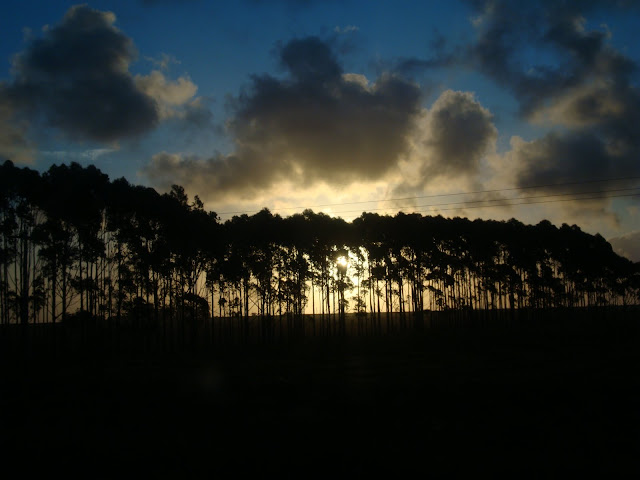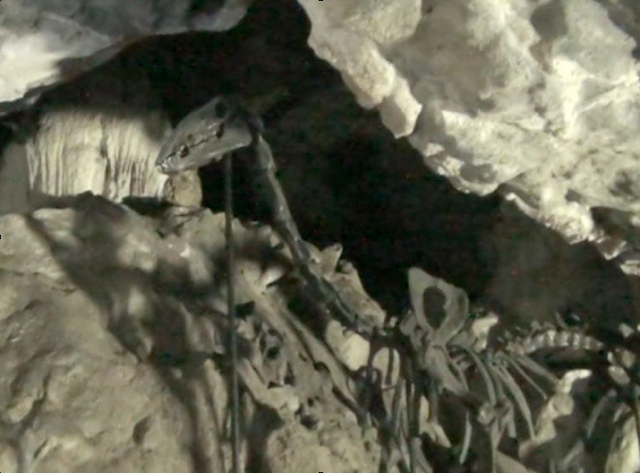I woke up feeling like crap. The last bus ride killed my immune system and I had picked up a bit of a cold but we had to forge ahead. We grabbed lunch from the grocery store and then I slept on a bench for a couple of hours until it was time to go. My beard was getting a bit shaggy by this point so I probably looked like a bit of a hobo, but no one left me any money.
Our plan was to get to Porto Alegre and see how we felt. It was about 14 hours, which felt like nothing after the last trip, and we had a great sunset to send us off. I slept amazingly well (no bus like a South American bus) and got rid of my cold, passing it on to my wife.
As we left, we saw them stopping another bus so we figured afterwards that it might not just have been a random search; it’s possible that they had been tipped off about some tourists travelling with drugs on them and that’s why they went right for me. We wouldn’t see such well-funded drug enforcement officials again until we got to Colombia.
The rest of the trip was uneventful. We had some breaded chicken on a stick (a rest-stop staple) for breakfast and I took some more pictures of the Brazilian prairies.
Despite the police delay, we still made it to Porto Alegre in good time. There wasn’t anything that we especially wanted to see there, and we felt well enough to push forward, so we made plans to head for the border the same day. A couple of tickets and a bus station hamburger later and we were on the way to Chuy.
My wife was feeling fairly sick and slept most of the way but I saw some cool stuff out the window. I saw my first real cowboys. They didn’t look exactly like the guy on Wikipedia, but they definitely had the hats and various other pieces of gaucho apparel. Imagine this carried forward a hundred years:
(Wikipedia photo)
Later, I saw some gigantic waterfowl that looked a little like something I remembered from the bird park (but didn’t take pictures of because they seemed boring at the time) and finally capybaras frolicking in the ditch beside the road! I woke my wife up for those and she just muttered something about “big rats” and went back to sleep. I was excited though.
(Not a particularly wild capybara – taken at the Buenos Aires zoo.)
We finally got to the border town, Chui/Chuy (Brazil/Uruguay) at about eight in the evening. Passport control was a breeze and we found a cheap hotel quickly enough.
Chuy is a bit of a strange place. It’s a town divided in half, with a Brazilian side and a Uruguayan side, making it a kind of neutral territory as a whole (border crossings are outside of town). The first two things you notice are casinos and beer-bellies hanging out of open button shirts. Casinos are outlawed on the Brazilian side but dominate the Uruguayan side, and older Uruguayan men have a very. . . relaxed sense of style. Overall, Chuy is pretty much exactly what you would expect from a town that thrives on duty-free, smuggling and casinos. There are an awful lot of homeless people for a population of 10,000 and there’s way too much swagger for the average belly size of the town. It’s the sort of place you might expect a South American Han Solo to hide from debt collectors.
I couldn’t complain too much though; it was definitely a place with character and we were happy to finally escape Brazilian prices. At about $25, the fairly nice private hotel room we got seemed like a steal and dinner from the supermarket felt basically free. Still, I was more than a little bit sad about leaving Brazil. We had a lot of fun there and I would really like to go back. I still miss Rio regularly, especially when it’s damp and dreary here in the fall. Apparently this is a common side effect of visiting Rio. The guidebook warned me about the saudade disorder but I didn’t listen, and now, every so often I get sucked into a memory of the Ipanema sun.
Here’s a little map of how far we’d come by this point. Still a long way to Cartagena!

















































